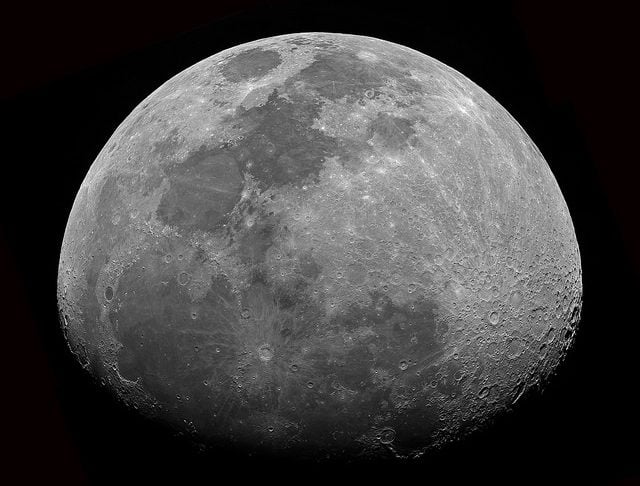When the
Apollo astronauts
returned to Earth, they came bearing 380.96 kilograms (839.87 lb) of Moon rocks. From the study of these samples, scientists learned a great deal about the Moon's composition, as well as its history of formation and evolution. For example, the fact that some of these rocks were magnetized revealed that roughly 3 billion years ago, the Moon had a magnetic field.
Much like Earth, this field would have been the result of a dynamo effect in the Moon's core. But until recently, scientists have been unable to explain how the Moon could maintain such a dynamo effect for so long. But thanks to a new study by a team of scientists from the
Astromaterials Research and Exploration Science
(ARES) Division at NASA's Johnson Space Center, we might finally have a answer.
To recap, the Earth's magnetic core is an integral part of what keeps our planet habitable. Believed to be the result of a liquid outer core that rotates in the opposite direction as the planet, this field protects the surface from much of the Sun's radiation. It also ensures that our atmosphere is not slowly stripped away by solar wind, which is
what happened with Mars
.
[caption id="attachment_66348" align="aligncenter" width="490"]
The Moon rocks returned by the Apollo 11 astronauts. Credit: NASA
[/caption]
For the sake of their study, which was recently published in the journal
Earth and Planetary Science Letters
, the ARES team sought to determine how a molten, churning core could generate a magnetic field on the Moon. While scientists have understood how the Moon's core could have powered such a field in the past, they have been unclear as to how it could have been maintained it for such a long time.
Towards this end, the ARES team considered multiple lines of geochemical and geophysical evidence to put constraints on the core's composition. As Kevin Righter, the lead of the JSC's high pressure experimental petrology lab and the lead author of the study, explained in a NASA
press release
:
Specifically, the ARES scientists conducted simulations of how the core would have evolved over time, based on varying levels of nickel, sulfur and carbon content. This consisted of preparing powders or iron, nickel, sulfur and carbon and mixing them in the proper proportions - based on recent analyses of Apollo rock samples.
[caption id="attachment_115249" align="aligncenter" width="580"]
Artist concept illustration of the internal structure of the moon. Credit: NOAJ
[/caption]
Once these mixtures were prepared, they subjected them to heat and pressure conditions consistent with what exists at the Moon's core. They also varied these temperatures and pressures based on the possibility that the Moon underwent changes in temperature during its early and later history - i.e. hotter during its early history and cooler later on.
What they found was that a lunar core composed of iron/nickel that had a small amount of sulfur and carbon - specifically 0.5% sulfur and 0.375% carbon by weight - fit the bill. Such a core would have a high melting point and would have likely started crystallizing early in the Moon's history, thus providing the necessary heat to drive the dynamo and power a lunar magnetic field.
This field would have eventually died out after heat flow led the core to cool, thus arresting the dynamo effect. Not only do these results provide an explanation for all the paleomagnetic and seismic data we currently have on the Moon, it is also consistent with everything we know about the Moon's geochemical and geophysical makeup.
Prior to this, core models tended to place the Moon's sulfur content much higher. This would mean that it had a much lower melting point, and would have meant crystallization could not have occurred until much more recently in its history. Other theories have been proposed, ranging from sheer forces to impacts providing the necessary heat to power a dynamo.
[caption id="attachment_135039" align="aligncenter" width="580"]
Cutaway of the Moon, showing its differentiated interior. Credit: NASA/SSERVI
[/caption]
However, the ARES team's study provides a much simpler explanation, and one which happens to fit with all that we know about the Moon. Naturally, additional studies will be needed before there is any certainty on the issue. No doubt, this will first require that human beings establish a permanent outpost on the Moon to conduct research.
But it appears that for the time being, one of the deeper mysteries of the Earth-Moon system might be resolved at last.
Further Reading: NASA
,
*Earth and Planetary Science Letters*
 Universe Today
Universe Today
